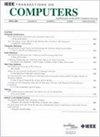AR-Light:通过语义分割和协同视图同步实现快速轻量级多用户增强现实
IF 3.6
2区 计算机科学
Q2 COMPUTER SCIENCE, HARDWARE & ARCHITECTURE
引用次数: 0
摘要
多用户增强现实(MuAR)允许多个用户通过交换环境信息与共享的虚拟对象进行交互。当前的MuAR系统依赖于3D点云进行现实世界分析、视图同步、对象渲染和运动跟踪。然而,3D点云的复杂性导致了显著的处理延迟,在商业框架中大约有80%的开销。这阻碍了可用性并降低了用户体验。我们的分析表明,在稳定的环境中保持现实世界场景的面向面为虚拟物体的放置和渲染提供了足够的信息。为了解决这个问题,我们引入了一种轻量级的四叉树结构,通过语义分割和几何来表示2D场景,作为3D点云的替代方案。此外,我们提出了一种新的校正方法来处理在用户之间的视图同步过程中虚拟对象放置的潜在偏移。结合所有设计,我们实现了一个名为AR- light的快速轻量级MuAR框架,并在商业AR设备上测试了我们的框架。现实世界应用的评估结果表明,AR-Light可以在各种现实世界场景中实现高性能,同时保持相当的虚拟物体放置精度。本文章由计算机程序翻译,如有差异,请以英文原文为准。
AR-Light: Enabling Fast and Lightweight Multi-User Augmented Reality via Semantic Segmentation and Collaborative View Synchronization
Multi-user Augmented Reality (MuAR) allows multiple users to interact with shared virtual objects, facilitated by exchanging environment information. Current MuAR systems rely on 3D point clouds for real-world analysis, view synchronization, object rendering, and movement tracking. However, the complexity of 3D point clouds leads to significant processing delays, with approximately 80% of overhead in commercial frameworks. This hampers usability and degrades user experience. Our analysis reveals that maintaining the facing side of the real-world scene in a stable environment provides sufficient information for virtual object placement and rendering. To address this, we introduce a lightweight quadtree structure, representing 2D scenes through semantic segmentation and geometry, as an alternative to 3D point clouds. Additionally, we propose a novel correction method to handle potential shifts in virtual object placement during view synchronization among users. Combining all designs, we implement a fast and lightweight MuAR framework named AR-Light and test our framework on commercial AR devices. The evaluation results on real-world applications demonstrate that AR-Light can achieve high performance in various real-world scenes while maintaining a comparable virtual object placement accuracy.
求助全文
通过发布文献求助,成功后即可免费获取论文全文。
去求助
来源期刊

IEEE Transactions on Computers
工程技术-工程:电子与电气
CiteScore
6.60
自引率
5.40%
发文量
199
审稿时长
6.0 months
期刊介绍:
The IEEE Transactions on Computers is a monthly publication with a wide distribution to researchers, developers, technical managers, and educators in the computer field. It publishes papers on research in areas of current interest to the readers. These areas include, but are not limited to, the following: a) computer organizations and architectures; b) operating systems, software systems, and communication protocols; c) real-time systems and embedded systems; d) digital devices, computer components, and interconnection networks; e) specification, design, prototyping, and testing methods and tools; f) performance, fault tolerance, reliability, security, and testability; g) case studies and experimental and theoretical evaluations; and h) new and important applications and trends.
 求助内容:
求助内容: 应助结果提醒方式:
应助结果提醒方式:


